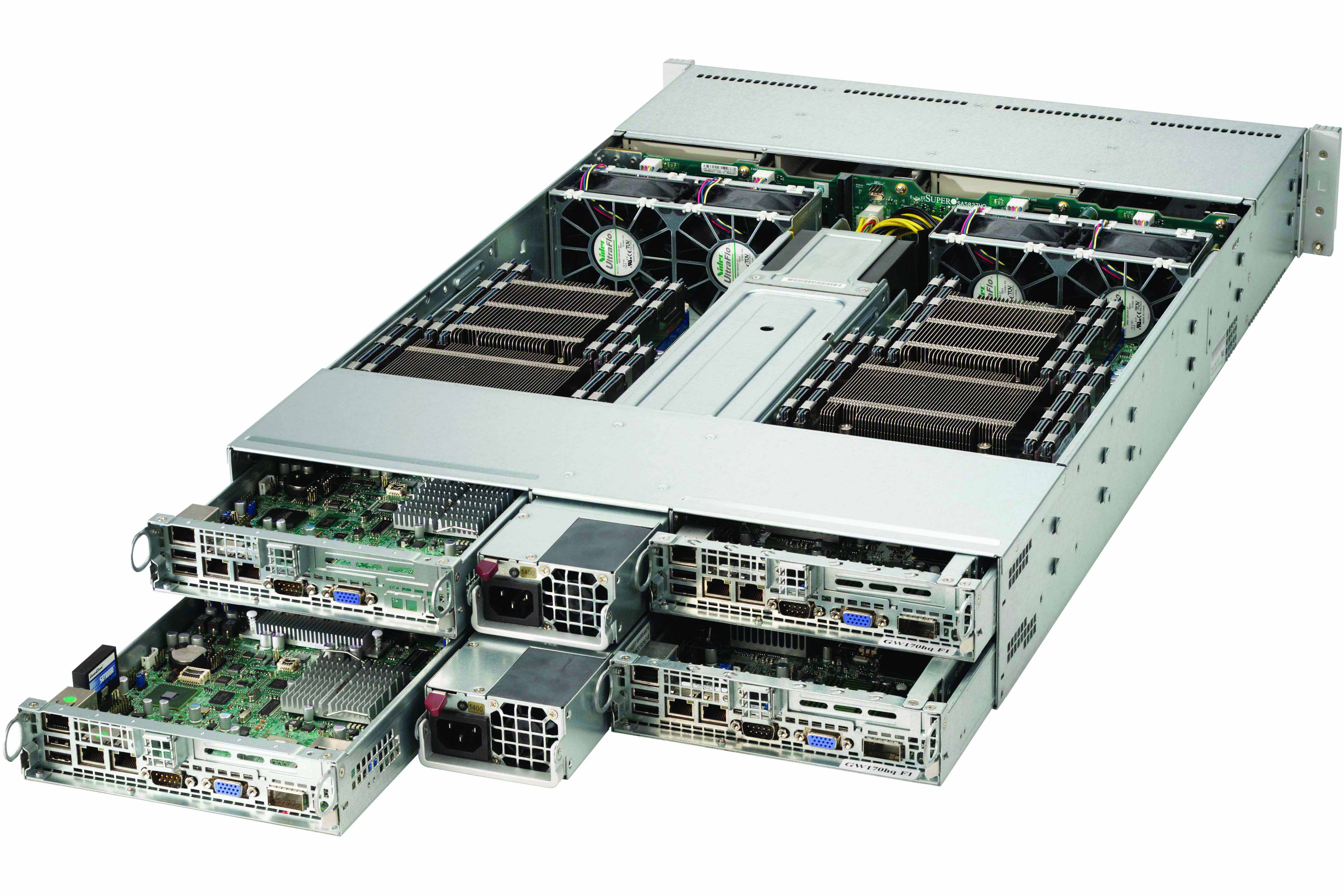Boston Quattro 1264-T01 review
This multi-node server packs a massive rack processing density and at a shade under £10,000, it's a highly cost effective alternative to blade servers.
Blade servers pale into insignificance when faced with the Quattro’s processing density making it well suited to a wide range of tasks including cloud computing and HPC duties. Even better is the price as the Quattro 1264-T01 is the equal of Dell’s PowerEdge C6220 for build quality and features but beats it soundly on value.

Blade servers usually provide the best processing density for rack cabinets but are increasingly coming under attack from multi-node servers. The new Quattro 1264-T01 highlights this as for less than ten grand it delivers a record breaking processor count.
The system is based on Supermicro's Twin rack server system, which combines four server nodes in a low profile 2U rack chassis. The basic system isn't new as it was introduced a few years ago but Boston has brought it bang up to date with Intel's latest Xeon E5-2600 processors
The system on review includes four nodes each equipped with a pair of 2.2GHz E5-2660 Xeons. These are the 8-core variants so each node has 16 physical and 32 logical cores. The system count goes up to 128 logical cores allowing 21 systems to cram a mind boggling 2,688 cores into a standard 42U rack cabinet.
The nodes function as independent hot-swap servers and can be easily removed from the rear by releasing small locking tabs and pulling them out using the grab rings on each side. Each node has its own monitor, network, serial and USB ports and even squeezes in a dedicated remote management port.

The Quattro presents its four server nodes at the rear and each is hot-swappable so can be removed without affecting the others
Node specifications
The nodes are fitted with Supermicro's proprietary X9DRT-HF motherboards which have been designed to maximise air flow and avoid hotspots. The processors are mounted with chunky passive heatsinks and flanked down the sides by four groups of two DIMM slots.
Each node includes 32GB of 1600MHz DDR3 RDIMM memory which can be expanded to a maximum of 256GB. If you want more then consider specifying the X9DRT-HF+ boards which have twice the number of DIMM slots.
There's room to expand as the nodes have a small riser with a 16X PCI-e Gen3 slot that accepts a half-height, half-width card. Supermicro also offers two variants of this board that have an embedded Mellanox InfiniBand CX4 port for high speed server clustering links.
Get the ITPro daily newsletter
Sign up today and you will receive a free copy of our Future Focus 2025 report - the leading guidance on AI, cybersecurity and other IT challenges as per 700+ senior executives
Dave is an IT consultant and freelance journalist specialising in hands-on reviews of computer networking products covering all market sectors from small businesses to enterprises. Founder of Binary Testing Ltd – the UK’s premier independent network testing laboratory - Dave has over 45 years of experience in the IT industry.
Dave has produced many thousands of in-depth business networking product reviews from his lab which have been reproduced globally. Writing for ITPro and its sister title, PC Pro, he covers all areas of business IT infrastructure, including servers, storage, network security, data protection, cloud, infrastructure and services.
-
 Westcon-Comstor and Vectra AI launch brace of new channel initiatives
Westcon-Comstor and Vectra AI launch brace of new channel initiativesNews Westcon-Comstor and Vectra AI have announced the launch of two new channel growth initiatives focused on the managed security service provider (MSSP) space and AWS Marketplace.
By Daniel Todd Published
-
 Third time lucky? Microsoft finally begins roll-out of controversial Recall feature
Third time lucky? Microsoft finally begins roll-out of controversial Recall featureNews The Windows Recall feature has been plagued by setbacks and backlash from security professionals
By Emma Woollacott Published
-
 The UK government wants quantum technology out of the lab and in the hands of enterprises
The UK government wants quantum technology out of the lab and in the hands of enterprisesNews The UK government has unveiled plans to invest £121 million in quantum computing projects in an effort to drive real-world applications and adoption rates.
By Emma Woollacott Published